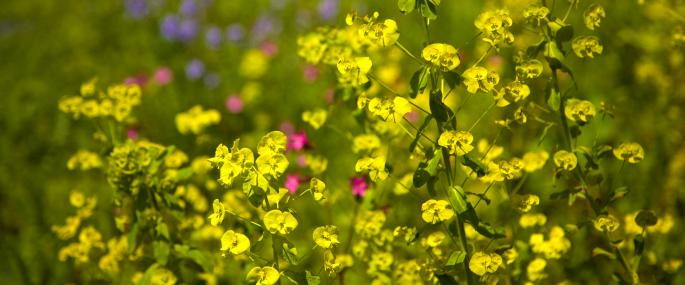Wood Spurge is, as its name suggests, commonly found in woodlands, particularly damp and coppiced woods. The ancestor of our garden varieties of Euphorbia (spurge), its attractive, greeny-yellow flowers can be seen from April to June.
The Wildlife Trusts manage many woodland nature reserves sympathetically for a range of spring flowers, from the unusual-looking Wood Spurge to fragrant Ramsons, showy Bluebells to delicate Wood Anemones. A mix of coppicing, scrub-cutting and ride maintenance open up the woodland floor to the sun, helping many flowers and plants to thrive. You can help too: volunteer for your local Wildlife Trust and you could be involved in everything from traditional forest crafts to raising awareness about woodland wildlife.
